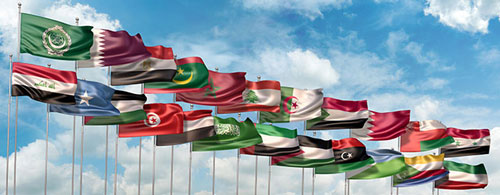Islamic finance is today a $2.2 trillion industry spread over more than 60 countries with the bulk of it concentrated in very few markets. Data compiled by the Union of Arab Banks’ research department shows that just 10 countries account for 95% of the world’s sharia-compliant assets. Iran leads the way with 30% of the global total followed by Saudi Arabia (24%), Malaysia (11%), the United Arab Emirates (10%), Qatar (6%), Kuwait (5%), Bahrain (4%), Bangladesh (1.8%), Indonesia (1.6%) and Pakistan (1%).
These countries drive the growth of Islamic finance, set industry standards and foster innovation. Over the past decade, Islamic finance grew at an exponential yearly pace of 10%–12%. Reuters expects total Islamic assets to reach $3.5 trillion by 2021 but that scenario is tied to the economic well-being of these 10 markets.
“A weaker economic performance in these core countries (except in Malaysia) has translated into lower growth opportunities. We therefore expect Islamic banks in core markets to suffer and grow more slowly than in the recent past,” wrote ratings agency Standard & Poor’s 2018 report on Islamic finance.
Islamic finance’s primary sphere of influence is of course the Arab world thanks to its Muslim-majority populations and abundance of petrodollars. The Middle East and North Africa (MENA, which excludes Iran) are home to 164 Islamic banks including 45 that rank in the global top 100. In 2017, their total assets reached around $600 billion, or 18% of the region’s total banks assets.
The Gulf Cooperation Council (GCC) dominates the world of Islamic finance with almost 90% of the MENA region’s sharia-compliant assets (see table below). The region’s 10 largest Islamic banks are GCC-based and account for nearly $400 billion in assets. These banks often branch out abroad. The Saudi-based Islamic Development Bank runs operations on all five continents while Bahrain’s Bank al Baraka has offices in more than 15 countries.
Up until recently, North African countries considered Islamic finance to be an unwelcome interference from Gulf states and Islamic banks and financial products were outlawed or strictly monitored. Then in 2017 these countries took important steps to boost “participative finance” as they call it. The Central Bank of Morocco allowed five Islamic banks to start operating in the kingdom. The country is also expected to issue its first Islamic bond or sukuk later this year. In Algeria and Tunisia where Islamic banks already existed, governments are pushing for conventional banks to develop and commercialise sharia-compliant products.If MENA represents Islamic finance’s past, the Asia-Pacific region — where the majority of the world’s 1 billion Muslims live — may represent its future.
Today, the Asian-Pacific region represents almost 25% of the global Islamic finance market. In Malaysia, sharia-compliant institutions account for close to one-quarter of the financial sector. Kuala Lumpur is a leader in sukuk issuance with 44% of the world’s Islamic bonds issued in 2016 and weighs in on international compliance with the Islamic Financial Services Board, one of the world’s two major Islamic finance regulatory bodies.
Other mature Asian Islamic finance markets include Bangladesh, Brunei and Pakistan where sharia-compliant assets make up more than 15% of total bank assets. Surprisingly, Islamic finance is hardly a factor in Indonesia even though its population is 90% Muslim. In 2017, sharia-compliant assets accounted for only 5.5% of total banking assets. In recent years, the authorities began to see the potential of Islamic finance and developed a roadmap to develop the sector with the help of Malaysian expertise. This includes the establishment of a dedicated district in Jakarta where all efforts will be centralised. In other parts of the world such as Sub-Saharan Africa, Islamic finance is just beginning to take off.
Sub-Saharan Africa only represents about 1.5% of the global Islamic finance industry but with the world’s fastest-growing population, 80% of people unbanked and a large Muslim population, opportunities seem endless for Islamic financiers. Several countries have already started to adapt their laws and regulations to allow Islamic finance to grow. South Africa pioneered the trend decades ago with the first African branch of Bahraini Bank el Baraka back in 1989.
Today, we see new players. Kenya has sharia-compliant banks, several conventional banks offering Islamic products and one Islamic insurance company. As east Africa’s largest economy, Kenya wants to position itself as the region’s Islamic banking hub.—Agencies










